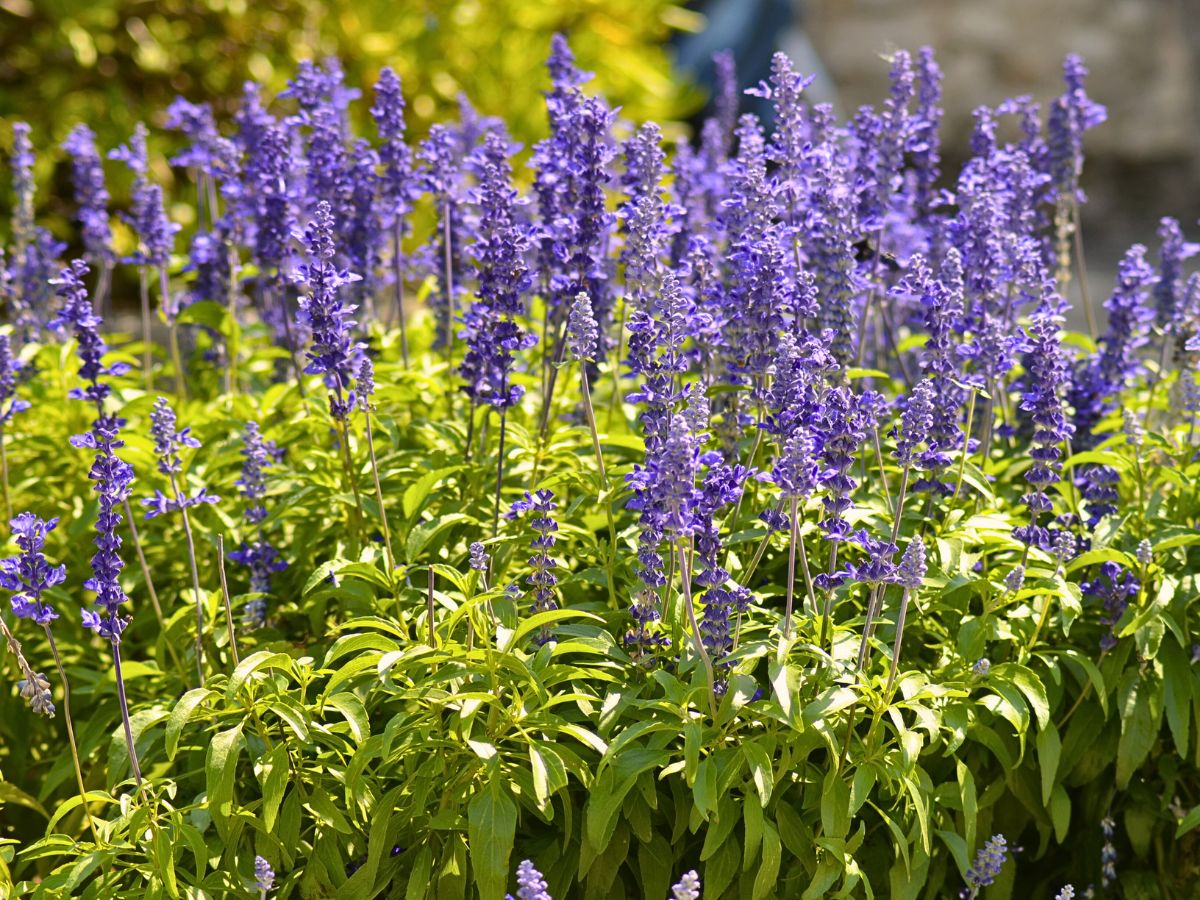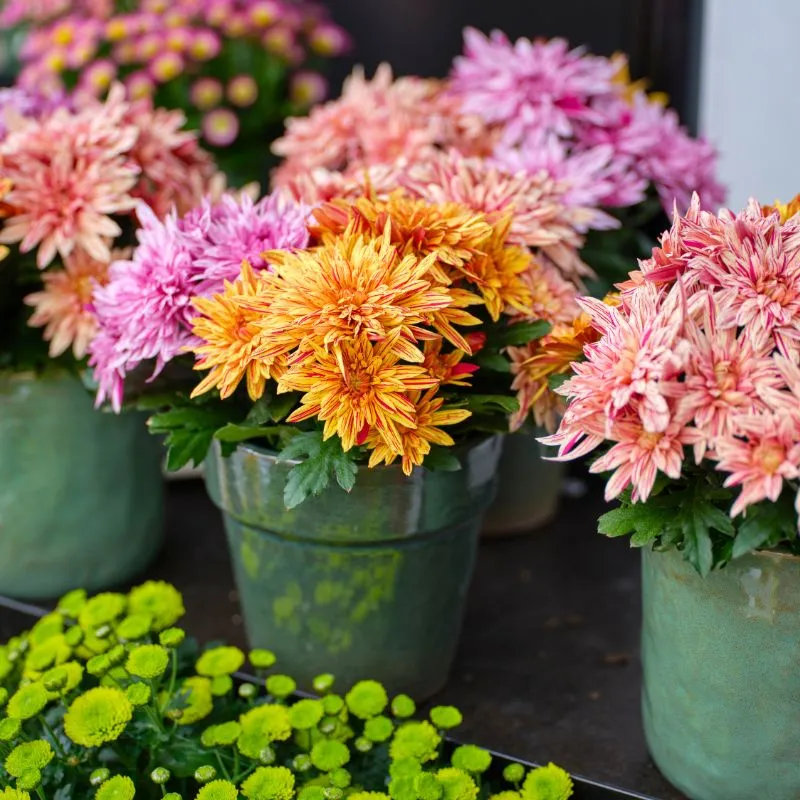Bugs and insects live practically everywhere. inside your home or elsewhere outside it, you'll definitely find them. And apart from bees, wasps, ladybugs, praying mantises, lacewings, ground beetles, and other beneficial ones that live outdoors, the vast majority of these crawlies and bugs that make their homes inside human habitations tend to cause harm and discomfort.
It, definitely, isn't practical to share the same roof with roaches, which often find their way into the house through cracks, open windows, and drainage ducts; or mosquitoes that are spread in many parts of the world. Some of these bugs are carriers of serious sicknesses. While flowers and houseplants are naturally grown to bedeck an otherwise boring area, some flowers come with a plus. They keep bugs away. Naturally!
Flowers That Keep Bugs Away
Mosquitoes, for instance, spread malaria, lymphatic filariasis, Japanese encephalitis, Zika fever, and dengue. Roaches and the common houseflies, on the other hand, carry disease-causing germs, while fleas and bedbugs tend to cause painful bites and stings, and also remain a nuisance to the household and even pets. The harm caused by these bugs is, often, too great to remain disregarded.

But did you know that there are beautiful houseplants that not only embellish the house and homestead but of which the flowers also keep these bugs away? Sweet-scented, flowered plants, with fragrances that freshen the insides of the house, and at the same time keep the bugs and insects away. Here are some such flowers and houseplants.
1. Calendulas
Also called pot marigolds, calendulas are annual flowers that usually have blooms that are yellow or pale-orange colored, with a dark center. They are often grown in garden beds and pots. Not only are these flowery plants a beauty, but they also are medicinal and can be used in cooking and by extension, keeping away stubborn bugs.

Photo by @rebeccamaterasso
The musky scent that these flowery plants emit acts as a deterrent to mosquitos, as it contains a pyrethrum compound. However, some insects such as thrips, aphids, and whiteflies like the pot marigold. But the catch is that the plant also attracts beneficial insects like ladybugs, hoverflies, and lacewings, among others that eat the aphids and thrips.
2. Chrysanthemums
Often known as mums, Chrysanthemums are beautiful flowering plants native to East Asia and northeastern Europe. They derive their name from the Greek words for 'gold' and 'flower’ and have a natural resistance to many insects. It is worth noting that natural pesticides contain pyrethrin, which is a derivative of chrysanthemum flowers. With their naturally occurring scent, chrysanthemums are deemed to be effective repellents of bugs and insects.

Photo by @patiopetals
Apart from being pretty to have inside and around the house, chrysanths also help purify indoor air by removing toxins and effectively keep away mosquitoes, fleas, ants, lice, roaches, fleas, silverfish, and lice as well as Japanese beetles which may be destructive to your lawn or other houseplants.
3. Nasturtiums
With their wide range of colors; from bright yellow to pale orange, red, and even purple colors, Nasturtiums would be a good addition to your household when gardening, especially for your front yard, and when planted in pots, window boxes, or in hanging baskets at the porch.

Photo by @enerhagen
They are among the most beneficial plants that anyone would have in their home. By attracting beneficial insects like bees and also hoverflies that feed on other destructive bugs, nasturtiums deter pests such as aphids that may otherwise attack your other garden and houseplants.
4. Lavender
Mostly grown across the Mediterranean region, northeast Africa, and western Arabia, lavenders are a fragrant flower and aromatic plant that can grow outside as well as in pots or containers inside the house. For indoor purposes, you may need to invest in dwarf lavenders and grow them in pots on the porch, balcony, or deck where the plant gets enough sunlight. Not only is the lavender plant beautiful, but it is also fragrant.

Photo by vikulina13
And while we may find the flower aromatic, creepy-crawlies like fleas, bugs, mosquitoes, ants, ticks, flies, and even unwanted rodents like mice and rats, certainly don't. It contains a compound called linalool that keeps the pests away, which makes the flower (plant) a good natural bug repellent. Therefore, you can grow lavenders among your other indoor houseplants and around your house to keep the crawlies away.
5. Catnips
Also called Nepeta, catworts, or catmint, catnips are a plant belonging to the mint family. Cats tend to love the plant, but not so for bugs and other similar crawling creatures. In fact, its name is derived from the notion that cats find its aroma irresistible. For humans, the aroma is relaxing. Furthermore, the plants' young leaves are edible and can be eaten raw, in salads, or used to flavor food. The flowers can be mixed with the leaves to make herbal tea.

Photo by Fast Growing Trees
Catnips are a hardy, upright, perennial herb with sturdy stems that are covered with fine furs, and grayish-green, almost heart-shaped leaves. The flowers range from pale lavender to whitish. The scent of the catmint keeps away mosquitoes, aphids, weevils, squash bugs, and a variety of beetles that may be damaging to your houseplants. The plant can be grown in pots indoors.
6. Petunias
Petunia is among the most popular flowers for the garden due to its exceptional bloom, colorful flowers, and extended flowering periods. There are different varieties of petunia flowers that you can choose from, to add a dash of color and variety to your home. And while these flowers may look as beautiful as they come, their bright colors may as well be a deterrent for bugs and mosquitoes.

The flower may, however, be susceptible to several other pests such as cutworms, whiteflies, slugs and snails, caterpillars, and even rabbits, squirrels, and ice, when grown outside. You can grow the flower in raised pots and hanging baskets or allow it to flow over the sides of window boxes.
7. Carnivorous Plants
These plants practically feed on insects and other crawlies, to supplement their nutrient intake and fulfill their nutritional needs. Their sweet-scented nectar and brightly colored attractive petals act as the bait attracting the insects to themselves. Then they trap the insects inside the petals and, with their digestive enzymes, extract the nutrients they require. Sundews, butterworts, Venus flytrap, bladderworts, pitcher plants, monkey cups, cobra lily, and the waterwheel plant are some common examples of these plants. A plus for carnivorous plants is that they are low-maintenance and easy to care for.

Photo by @tomscarnivores
Environmental Safety
There have always been concerns about the use of chemical deterrents for pests and bugs in the home, especially when it comes to the health and safety of people, pets, and the environment. One would, therefore, vouch for adopting such plants and flowers rather than using harmful chemicals to repel bugs in their home.
Feature image by @ichigo05299, header image by genniebee512.










